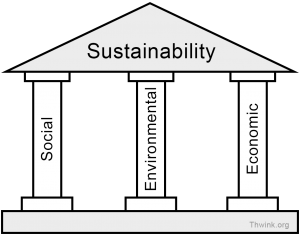3D Printing A Completely New Generation

In COMM101 Class 14, we talked about entrepreneurship and innovation. The concept of disruptive innovation really caught my attention. Disruptive innovation refers to an innovation that creates a new market and eventually has the ability to disrupt or displace established market leading firms. I believe a prominent example of disruptive innovation is 3D printing.
3D printing is on the rise as it is transforming the way we manufacture and design items. Through 3D printing, costs are cut, time is saved, and the idea of mass customization seems more realistic. All of these benefits are appealing to various companies and is becoming an attractive and worthwhile investment.

I realize that 3D printing has the ability to revolutionize the way different industries operate. I notice the drastic change already in both the manufacturing industry as well as the healthcare/medicine industry.
Currently as 3D printers are still relatively new, the general public doesn’t yet have prime exposure or access to them. However, the shift towards 3D printing is already evident and inevitable. PWC conducted a research back in 2014, the data displayed that 11% of manufacturing companies had already switched to volume production of 3D printed parts or products. . Referencing an external blog by Charlie White on 3D Printing, I can see the impact and numerous opportunities.
Recently, in mid 2017, Adidas revealed their new shoe which has a 3D printed sole. The new 3D printing technology could save money and time for their production process. “Adidas plans to use the technology to customize shoes for individual consumers.”

Adidas utilizing 3D printing
This is the beginning of mass customization as 3D printing can be done on an industrial scale but with the ability to design and customize each product.
Furthermore, 3D printing as a new way of manufacturing really impacts the healthcare industry. Since the needs of patients are so specific, it is important to cater to each individual’s needs and requirements.

Variety of customized hearing aids for each individual
For example, the manufacturing company mentioned in the blog, Sonova, partnered with EnvisionTEC to create hearing aids for patients through 3D printing. Not only does the 3D printer print about two dozen hearing aid shells in one hour, it also has the capability to use 3D molds and special software to customize every piece to fit each individual’s ear for optimal comfort.
The innovations of 3D printing are endless, whether printing at an industrial level or just on a small scale. I think that the manufacturing industry will experience the greatest impact from 3D printing being a disruptive innovation. On the other hand, the new generation of mass customization will be a turning point for business processes and help consumers fully comprehend the power of 3D printing.

Word Count: 443

 Consumerism within the fashion industry puts increasing pressure on the
Consumerism within the fashion industry puts increasing pressure on the 

Recent Comments